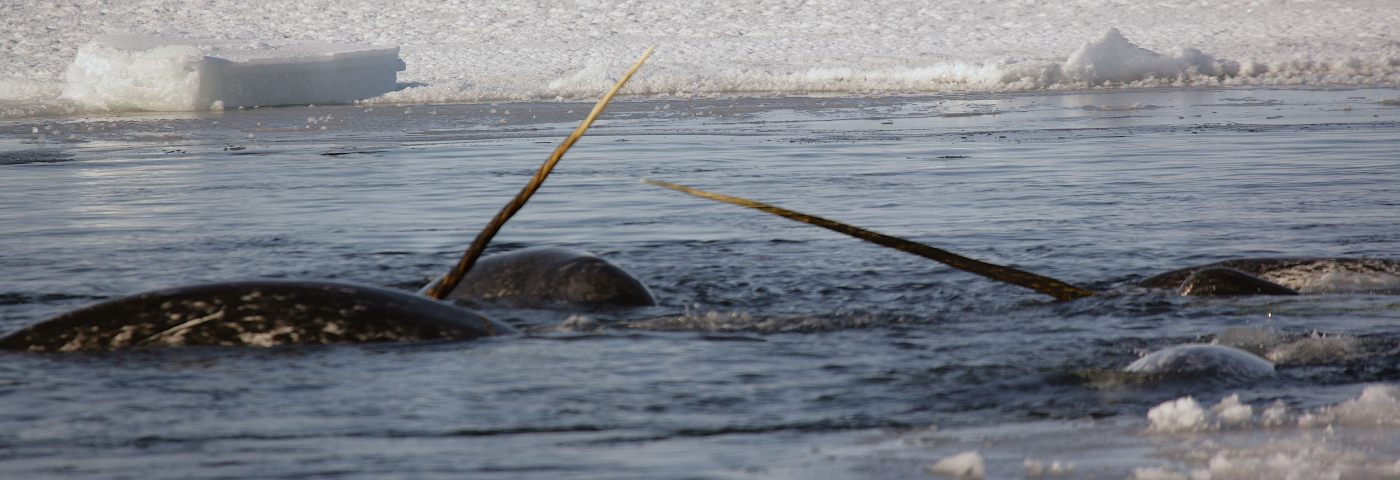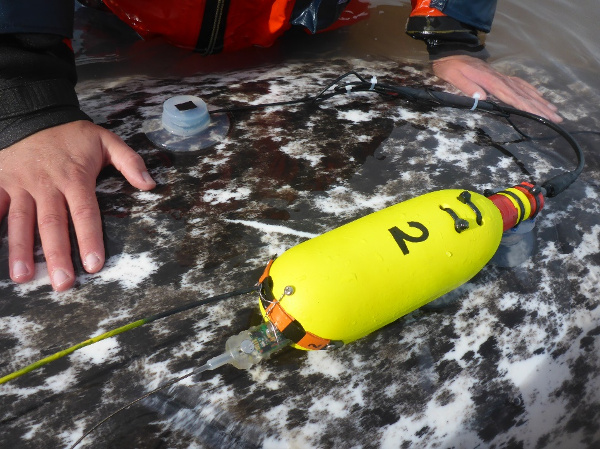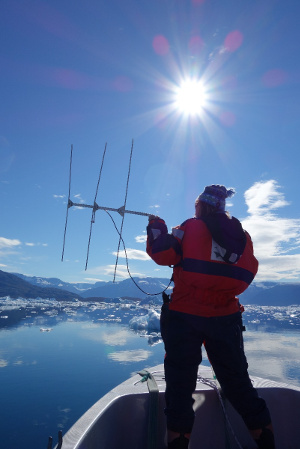
Crossed currents
Conflicting stress responses may beach marine mammals
For millennia, ocean mammals have beached themselves along coastlines, and people have wondered why. But while theories abound, the cause of mass strandings in particular has remained elusive. New clues are now emerging thanks to submersible technology that allows near real-time observations of marine mammal physiology and behavior.
Because they share the same basic anatomy of all mammals, whales and dolphins (cetaceans) hold on to a single breath of air while diving so deep that their lungs may temporarily collapse. This reliance on the “plumbing” of land dwellers could play a heretofore unrecognized role in stranding, said Terrie Williams, UC Santa Cruz professor of ecology and evolutionary biology.

Using sophisticated monitoring technology to study deep dives, Williams and her team have found suggestive evidence that being startled—by human-produced sounds like marine sonar, for example— during a demanding dive that already taxes their physiological limits could overstress deep-ocean whales and dolphins. The resulting disjointed stress response could indirectly damage their brains—and clear-thinking skills—leaving them prone to stranding.
Rescuers often describe disorientation in stranded cetaceans that fits with brain damage, said Williams, who has studied the physiology of large mammals for three decades. All kinds of things, from sunspots to geomagnetic anomalies, have been proposed to explain this confused behavior, she said. “Maybe it’s simpler—something happened before they got to the beach that disrupted their normal brain function.”
All mammals react similarly to cold water exposure of their faces. To conserve oxygen and warm blood for vital organs like the brain, the involuntary part of the nervous system slows the heart rate and constricts blood vessels in the extremities. In some humans, this “dive response” also produces irregular heartbeats.

Given their underwater skills, marine mammals were expected to keep a steady heart rate during deep dives. To test this assumption, Williams developed the first monitor for wild cetaceans that records detailed information about their heart rates. Initial studies with the device, which also tracks fin speed and depth, were performed with bottlenose dolphins at UCSC’s Long Marine Laboratory and Weddell seals in the Antarctic.
The results, reported in 2015 in Nature Communications, disproved the prevailing dogma. During normal hunting dives, the hearts of these deep-ocean dwellers rapidly switched between slowing down and speeding up. The greater the depth, the greater the heartbeat irregularities. In effect, the involuntary dive response that slowed down the heart appeared to oppose the exercise-related messages the brain sent to accelerate it while chasing prey. And blood flow stalled by the erratic heart rate would be expected to decrease the oxygen and nutrients reaching vital organs. “The more we looked at the heart and exercise responses of these animals, the more we wondered how they were getting enough oxygen to the brain,” Williams said.

Testing her monitors on narwhals in Greenland provided additional key insights—reported in Science in December—about how the stress of human interaction impacts this physiology. Working with Inuit that hunt narwhals in Scoresby Sound, Williams, former postdoctoral researcher Susanna Blackwell, and lead collaborator Mads Peter Heide-Jørgensen have now tagged and studied nine of these elusive tusked whales.
The longer the net-entangled narwhals were handled, the further their heart rates dropped once released. Moreover, the animals’ heart rates during their initial dive plunged to as low as three or four beats a minute and stayed there much longer than normal. “I realized we had recorded a type of stress response,” Williams said.
Stress-triggered, whole-body freezes in which heart rates dropped by half had been reported in marine mammals. But not the extreme cardiac freeze (heart rates more than 90% below normal) observed in the released narwhals, which could last ten minutes. Importantly, during this period of likely reduced blood flow, the fleeing narwhals also often doubled their normal swimming speed. That is, the heart freeze and flight response occurred simultaneously, requiring the animals to pump their muscles into overdrive on an emptying “tank.” Fear exacerbating these opposing freeze and flight responses appeared to create a “trifecta” effect with the hypothetical potential to instigate brain damage, Williams said.
Ultimately, Williams’s research aims to make a difference in the survival of the animals she studies. “Every day we’re getting reports of species either becoming endangered or becoming extinct,” Williams said. “We’ve got to try to get ahead of that extinction curve and figure out the information that’s necessary to prevent these rapid declines.”

